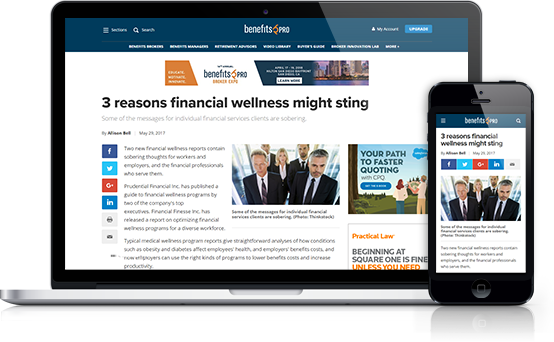Focusing on financial wellness isn’t an ongoing fad. It’s an issue that is here to stay for the foreseeable future and the numbers paint the troubling picture of employees’ financial literacy.
In fact, lack of money management skills among employees may be a bigger issue than many employers realize. Even more serious is the impact employees’ lack of financial health is having on companies. Employers who accept this reality and then provide financial wellness education and benefits to help employees improve their financial literacy are on their way to having more productive workers as well as an enhanced bottom line.
The state of employees’ financial health
Recommended For You
Complete your profile to continue reading and get FREE access to BenefitsPRO, part of your ALM digital membership.
Your access to unlimited BenefitsPRO content isn’t changing.
Once you are an ALM digital member, you’ll receive:
- Breaking benefits news and analysis, on-site and via our newsletters and custom alerts
- Educational webcasts, white papers, and ebooks from industry thought leaders
- Critical converage of the property casualty insurance and financial advisory markets on our other ALM sites, PropertyCasualty360 and ThinkAdvisor
Already have an account? Sign In Now
© 2025 ALM Global, LLC, All Rights Reserved. Request academic re-use from www.copyright.com. All other uses, submit a request to [email protected]. For more information visit Asset & Logo Licensing.








